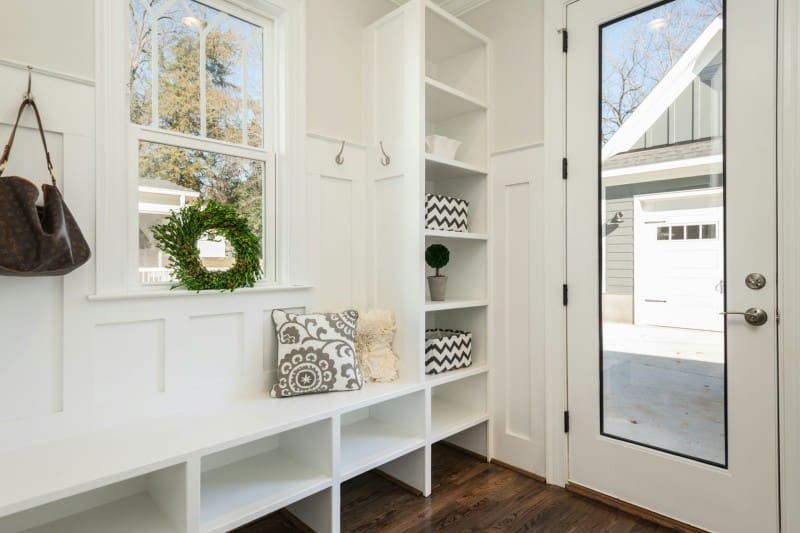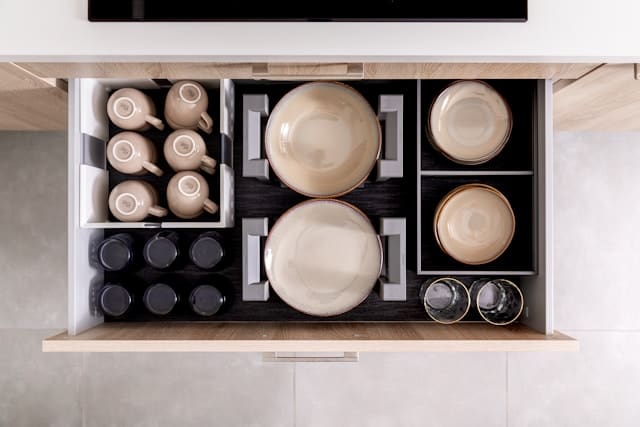Organizing for Sensory Sensitivities: A Professional’s Guide to Creating Comfortable Environments
This page may contain links to Amazon.com or other sites from which I may receive commission on purchases you make after clicking on such links. Read my full Disclosure Policy

A disorganized and cluttered home can trigger sensory overload, anxiety and physical discomfort. As a professional organizer, you can deliver a sensory-friendly environment that encourages relaxation and tranquility for neurodiverse individuals. Embrace this approach to help your clients achieve maximum functioning and comfort in their daily lives.
Understanding Sensory Sensitivities
Sensory sensitivity disorder is not an official medical diagnosis, but a heightened response to sensory input. Those with neurodivergent conditions like autism spectrum disorder and attention-deficit/hyperactivity disorder (ADHD) usually experience symptoms.
People with this trait might feel negatively affected by bright lights, busy patterns, noise, clutter and textures. Others tend to touch items or be prone to bumping into things.
Professional organizers must demonstrate empathy and understanding of their client’s unique sensory preferences to deliver a comfortable, soothing and functional living environment.
Assessing Sensory-Friendly Meaning for Clients
Evaluate your client’s sensory requirements by providing questionnaires, checklists and intake forms to identify particular triggers and preferences. As you walk through the home, make note of the current environment, including lighting, noise, textures and decorations.
Ask your client what their and their household’s routines and challenges are, and what they hope to accomplish through enhanced organization. This will help you tailor a plan that best meets their needs.
Key Principles of Sensory-Informed Organizing
According to research, 55% of Americans say clutter causes them significant stress, which could result in anxiety and feelings of overwhelm. Maintaining a clutter-free home is even more essential for those with sensory sensitivities.
Professional organizers should follow these key principles of sensory-informed organization for their clients:
- Remove visual clutter by storing excess possessions in closed containers.
- Create clear zones for easy, safe walkability and less stimulation.
- Maximize natural lighting and avoid harsh artificial options — install dimmer switches for better control.
- Manage sounds with rugs, curtains and acoustic paneling.
- Choose softer, natural materials and textiles to prevent physical irritation.
- Avoid fragrant cleaners, candles, diffusers and incense.
- Purify the surroundings with proper ventilation, plants and windows.
Calming Sensory Room Ideas for Adults
Professional organizers have the fulfilling task of helping individuals with sensory sensitivities create a more comfortable, organized living environment. Consider the following ideas as you approach each room.
Bedroom
A bedroom is a sanctuary for rest, especially for adults with sensory sensitivities. Blackout curtains are an excellent option for eliminating excessive light and supporting better sleep. Likewise, soft and breathable bedding in neutral shades reduces physical and visual distractions.
Keep just a few decorative items on dressers and nightstands, concealing the rest in baskets or containers that blend into the surroundings. It’s also crucial to remove scented candles and other fragrances.
Living Room
Create clear pathways between furniture to keep the living room open and airy. Organic materials in sofas and rugs are vital for enhanced comfort.
Sheer curtains will allow natural light to flow into the room while giving your client the option to reduce brightness. A cohesive color palette and noise-reducing elements are other sensory-friendly examples for avoiding busy patterns and ambient sounds. Finally, store remote controls and magazines in closed containers to reduce visual clutter.
Kitchen

Clients who use their kitchen frequently may feel overwhelmed by utensils and appliances on their countertops. Organize essential cookware in drawers, labeled bins and cabinets, ensuring easy accessibility. Another way to stay organized is to transfer pantry items into large glass containers and mason jars.
Soft-close drawers can decrease sound irritation, while charcoal filters and baking soda ventilate and minimize strong odors around the oven, stovetop and refrigerator.
Home Office
A home office can easily become cluttered, especially if the client works remotely. To help them maintain productivity, replace their furniture with ergonomic alternatives for improved posture and less discomfort.
A range of non-distracting storage options — including filing cabinets and cable management solutions — is critical. Rather than open shelving, consider a large unit with cabinetry and drawers.
Closets
A disorganized closet could make any person with sensory sensitivities avoid the space at all costs. As a professional organizer, you can give these tight areas careful attention, sorting clothing by color and category. Soft hangers preserve clothing, and labeled bins and cubbies can keep shoes and accessories off the floor.
Also, install soft overhead lighting to help your client distinguish between their clothing items without visual overstimulation.
Adding Natural Elements to Sensory-Friendly Environments
Natural elements are necessary to a supportive and calming sensory room. Greenery, in particular, can remove harmful air pollutants and provide shade on hot days when placed strategically in front of a window.
Other options include using wood, cotton, bamboo and additional natural materials, which enhance physical comfort and avoid overstimulating synthetic textures. Replacing artificial light with daylight will further boost your client’s mood and limit harsh visual sensory conditions.
If possible, try to create numerous sightlines to the outdoors. Studies have shown that nature connectedness improves mental health in those with high sensitivity and a greater susceptibility to stress, anxiety and depression.
Ethical Considerations
Although you may have ideas about creating a sensory-friendly environment, active listening is essential to honoring each client’s unique sensory preferences. You must also maintain strict confidentiality and respect for their privacy when handling details about their neurodiversity and sensorial conditions.
Organizers should consider the bounds of their expertise and understand when their clients’ needs are beyond the scope of their professional abilities. The most ethical choice would be to consult an expert occupational therapist or refer them to someone more qualified. A collaborative approach will foster greater trust with your client and ensure they receive the support they deserve.
Achieving Tranquility in Sensory-Friendly Spaces
Professional organizers always want to apply their skills to create a functional and comfortable space for everyone they work with. Although home organization for people with sensory sensitivities may be complex, satisfied and content clients make it worthwhile.
Want to talk to colleagues about working with neurodiverse clients – or anything else?
Join the POPS Circle, where organizing and productivity professionals share ideas, experiences, and encouragement.
Photos by Douglas Sheppard and Orgalux on Unsplash




I can totally relate to this post. My daughter had sensory processing issues when she was very little, and we found it helped to “mute” a lot of stimulants in her environment. Although she’s fine now, she is still sensitive. I also have sensitivity to sounds, and other family members struggle with light and scents.
As you suggest, listening is the #1 most important factor in these situations. Clients with sensory issues will usually mention them within the first ten minutes of a work session. They want you to know. Our goal is to alleviate the particular situation they manage.
I would say sensory issues or not, decluttering decompresses most people. Clear surfaces and order just calm everyone down, which is one reason why I delight in what I do!
Seana, that’s a great reminder of the importance of listening! So often, when working with a client for the first time, there’s so much to take in that it’s easy to miss some cues. This initial time together forms the basis for your work together, so it’s critical to get the best understanding of their situation that you can.
These are wonderful suggestions for creating a sensory-friendly environment. And the key, as mentioned both in the post and comments is listening. Solutions are unique for each person’s preferences. But this article gives a great starting point.
I love the idea of those ‘soft’ closing drawers. We have one cabinet in our garage that does. I like that it doesn’t bang shut and closes on its on.
It’s amazing how a little thing like that can make such a big difference!